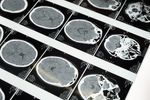So, you go for an annual check-up and your primary care doc slaps on the blood pressure cuff and then delivers the bad news. Your blood pressure, which has been steadily ticking up for years, has now crossed the threshold, into either borderline or bona fide hypertension. Hardly good news but you’ve got plenty of company as about half of American adults have some form of it.
Even for a borderline case, most docs will put the pharmaceutical option on the table: a choice between a bunch of different classes of drugs, all of which will drive down that number. For a reading of 140 or above, that prescription pad will almost certainly will come out, particularly as these days, some establishment groups like the AHA are now classifying readings in the 130s as “hypertension”.
What do I, as an integrative physician, think about this all-too-common scenario? I’ll readily grant you that the BP meds are one of the success stories of pharma-based conventional Western medicine, helping to significantly lower the rates heart attack and stroke over the past fifty years or so. But when it comes to immediately reaching for the prescription pad to treat milder forms of high blood pressure, I see that as a lost opportunity.
Hypertension rarely exists in isolation. More often it’s the most readily measured indication that your whole physiology is out of sync — your blood sugar, your cholesterol, your weight, a lousy state of affairs that we call “metabolic syndrome.” So a higher-than-you’d-like BP reading should be your invitation to start getting things back in order.
The good news here is that you can often do that without the help of the drugs. If, after your best efforts, your primary care doc still recommends the meds, the dose will likely be lower and any side-effects, mild to non-existent. So, what follows, is a primer on what you can take, and more significantly, what you can do to get your circulatory system pumping as efficiently and healthfully as possible.
What is high blood pressure and why is it so important?
Let’s say, lucky you, your BP read-out is an enviable 120/80 – the first, higher number is the systolic BP which measures the pressure of the blood pressing against the walls of your blood vessels as the heart beats and the lower number is the diastolic, the pressure against the vessels in-between those beats. When that systolic number creeps into the borderline range, the 130s, or becomes bona fide hypertension, 140 and above, bad things start to happen. The heart muscle has to work harder to push the blood through the blood vessels, and that higher pressure over time wears away at the vessels themselves, making them more susceptible to plaque build-up (atherosclerosis), narrowing them and further driving up the pressure. That sets you up for possible future heart attack and stroke, not to mention damage to the kidneys and the brain.
Fighting Back, Starting With Greens
Nothing is more important than diet in keeping the lid on blood pressure. And when it comes to diet all-stars, you can’t top the greens, especially those with high amounts of nitrates. Inside the body, they convert to nitrates which in turn become nitric oxide, a compound that relaxes the vessels, allowing the blood to flow smoothly without high-pressure build-up. Just what the doctor ordered. The king of the BP-friendly greens is the peppery-tasting arugula (aka roquette or rocket) which comes in at about 500 mg. of nitrates per 4 oz. serving. Other potent greens include celery, butter leaf lettuce and beets, though beets are a little high in sugar so use a light hand. However, if you’d like to go the beet route another way to do it is with fermented beets (the fermenting process reduces the sugar content), fermented beet juice or with a high-quality, fermented beet supplement.
More Green Goodness, and Hold the Salt
No matter what greens you choose (broccoli, spinach, peppers, etc. and try to go organic or farmers’ market), they’re your ally in the fight against hypertension. They’re all high in the mineral potassium which helps regulate the amount of fluid flowing through your system, and hence, blood pressure. Potassium is the yin to the yang of sodium which pushes in the opposite direction, promoting fluid retention for some. For people who are sensitive to it (and not everyone is), too much salt (i.e. sodium) in the diet, and too little potassium, can push up those BP numbers. This applies to all types of sodium, be it sea, Himalayan, old school table salt, and beyond.
The Dietary Big Picture
This one is easy. Big picture: go low on the carbs, especially low-fiber, low-nutrient carbs. In practice that means making friends with the non-starchy veggies and avoiding (like the plague) processed foods – high in both salt and sugar and low in just about anything good. Processed meats like salami and bologna are another no-go. But you should make sure you get enough protein in the diet, be it animal (for instance, non-industrial farmed fish, especially the small, oily ones or organic grass-fed meats and poultry) or plant (for instance, nuts, seeds, lentils). One on-point research study found that people who got healthy amounts of protein in their diets had a 40% lower risk of high blood pressure, and when they combined that with high-fiber intake, a 60% lower risk. So, in other words, you can do a lot to beat those numbers back below the borderline mark simply by paying attention to what goes into your mouth.
Consider a Bit of Supplemental Insurance
While supplements can’t replace a healthy diet, they can help shore up some weak links your blood pressure armor. Garlic supplements have been found in one review of the research literature to lower blood pressure in people with high BP by up to five points. Powdered beet pills, although less well-studied, make sense – you’re increasing your supply of nitric oxide without taking on-board the amount of sugar you’d get with beet juice. For some folks, taking nitric oxide supplements or nitric oxide precursors like L-arginine and L-citrulline seems to help too.
But one of my favorite supplements to reduce blood pressure is magnesium – most of us don’t get enough of it in our mineral-depleted food supply. Which type of magnesium to buy? You can try magnesium glycinate, which is well absorbed by the body and can serve as a mild sleep aid, or, if you tend towards constipation, you can try magnesium citrate, which also works as a mild laxative and can help in that department. And finally, multiple studies have shown some reduction in blood pressure in people who take fish oil supplements.
Moving Toward Healthy Blood Pressure
It’s not just what you put into your body, it’s also what you do with your body, namely, moving it. I have nothing against government recommendations, like getting 150 minutes a week of moderate exercise. If you’ve got a regular gym or jogging or cycling or swimming thing, great. But what often gets left out of the equation is the everyday movement that we don’t necessarily think of as exercise, which can be just as, or more important, when it comes to keeping circulation, and everything else, in trim. It might be regular long walks or gardening or playing with the kids or grandkids. In whatever form it takes, physical activity tones the heart muscle so it can pump blood through the system more efficiently, with less strain. When we’re moving the body, our blood pressure actually goes up, to meet muscles’ increased demand for blood, but after we cool down, the parasympathetic nervous system kicks in, and we’re in a state of deep relaxation, with lower BP to match.
Pounds Matter, and More of Them Equals Higher BP
We’ve talked about the direct benefits of eating and moving well. Here’s a big indirect effect: weight, that is, helping you to lose weight if that’s what needed or to avoid gaining the unwanted weight in the first place. Those extra pounds put an extra strain on the heart to deliver blood to the body and that usually means higher blood pressure. Even a relatively modest loss of ten pounds can have a positive effect on BP. Though dropping weight can be a challenge, it’s worth the effort and an excellent way to get your blood pressure moving in the right direction.
Unwinding Mind, Body and Your BP to Boot
One common cause of hypertension is stress. You’re confronted with a demanding situation, your brain overreacts, telling the adrenal glands to pump out excessive amounts of cortisol, the primary stress hormone, as well as adrenaline, the “fight or flight” hormone. This happens over and over until your “new normal” is a physiologically stressed-out state that keeps your blood pressure elevated all day. Not good. Now there’s no one way to unwind this process that’s perfect for everyone. I’m a big believer in sitting meditation (following the in-out motion of the breath) and yoga. For other people, it’s a walk in nature or in a city park, or a sauna, or a hot bath in the evening. The key is to make it a regular part of your routine, not an obligation but a pleasurable release that, over time, might just save your life.
Lower Your Blood Pressure With Good Snoozing
Sleep is part of the stress story. Bad or insufficient sleep is almost always bound up with an overactive stress response. Each one makes the other worse. And each can do a number (not a good number) on your blood pressure. Good sleep habits, like good stress management, is a story unto itself – take a look at my 9 Tips for Better Sleep for how to upgrade your sleep and tame your stress — but here are a few basics: stick to a regular schedule (even on weekends) that permits at least seven hours a night; power down several hours before bed – turn lights low and no screens; get plenty of exposure to early morning sun.
Rethink Those Drinks (And Smokes Too!)
At this late date, I don’t think I have to warn you about the dangers of smoking and or vaping — it’s a disaster, for your blood pressure and everything else associated with your body and being. But not so well known is the effect of alcohol on your blood pressure levels, and no surprises here but the news isn’t good. Research has found that blood pressure falls for the first twelve hours after consuming two drinks but then it rebounds and increases. So, if you have a couple of drinks in the evening, but the time you’re ready to start your work day in the morning, you’ll be starting with elevated BP, adding even more physical stress to your day. Best to drink as little alcohol as possible if you want to keep BP in check.
Keep an Eye on Your Numbers
If you want to stay off the drugs, keeping a close eye on your numbers with a home blood pressure monitor can be a big help when it comes to keeping tabs. It can also help you figure out if or how well your efforts are working. Once you pick up a blood pressure monitor, though most devices are fairly accurate right out of the box, if possible, take it will you to your next doctor’s appointment and ask them to calibrate yours to ensure the best accuracy. When you’re getting started, take your readings once a day or every other day, at roughly the same time, sitting upright, feet on the floor. Measure both arms when you first start, though you’ll likely get slightly different numbers. After that, go with the arm that gave the higher number, and continue to measure that one.




